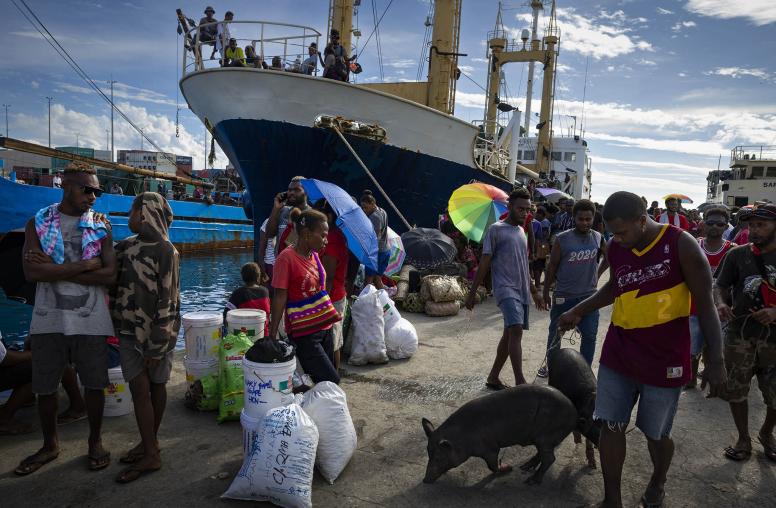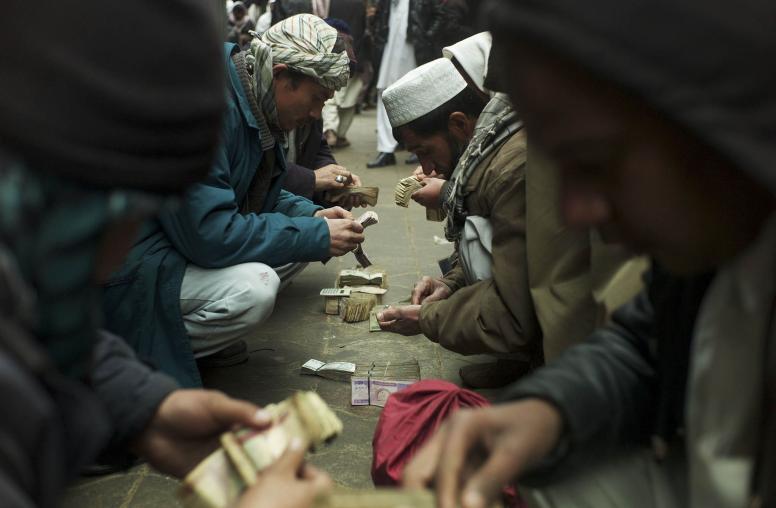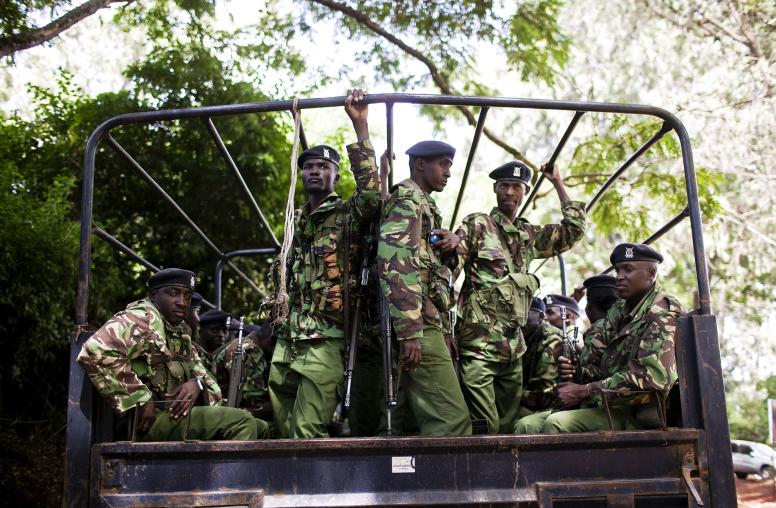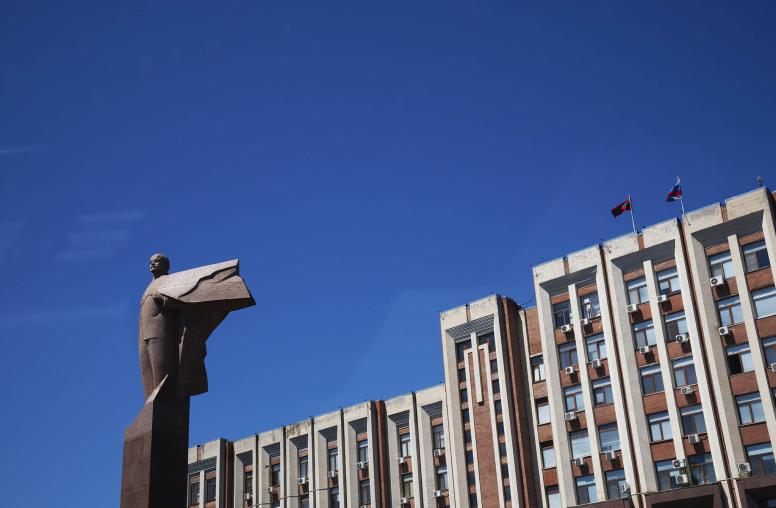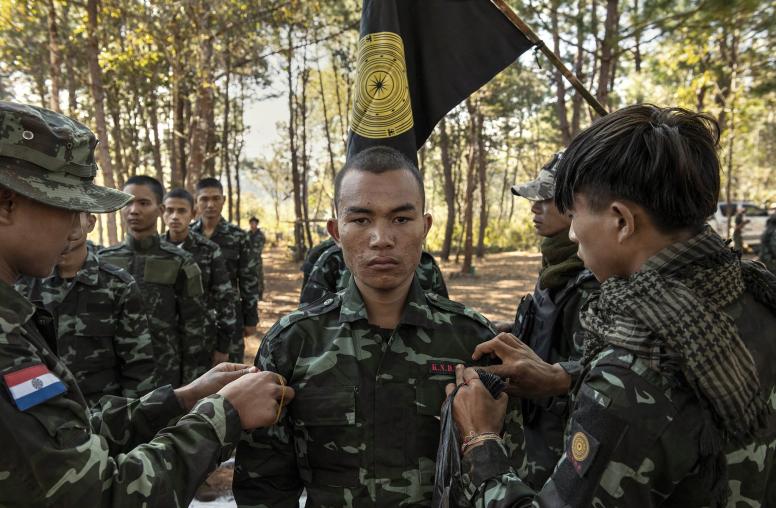The Conflict Prevention and Fragility Working Group develops timely, policy-relevant analysis at the intersection of the global response to COVID-19 and conflict prevention, identifying practical policy solutions for embedding a fragility lens into the global pandemic response. Building on the findings of the Task Force on Extremism in Fragile States and the Global Fragility Act (GFA), this group of experts includes thought-leaders with a wide-range of experience and expertise—from advocates to academics to frontline peacebuilders.
Conflict Prevention and Fragility Working Group
Over the past decade, as conflicts around the world became entrenched and humanitarian crises proliferated, a consensus emerged around the need for new approaches that reduce the underlying drivers of conflict and violence and increase resiliency to shocks.
This consensus culminated in the U.S. with the Global Fragility Act, an ambitious bill signed into law in late 2019 that aims to overhaul the way the U.S. engages in fragile states—where the social contract between citizens and the state is severed and societies are fragmented and prone to violence. If successfully implemented, this new framework could ultimately transform U.S. policy and assistance in fragile countries, demonstrating an alternative approach to the kinds of multi-billion-dollar state-building efforts that have been underway for years in places like Afghanistan and Iraq.
In the context of COVID-19, this agenda has gained added urgency, as the fallout from the pandemic will stress countries’ social fabrics in ways that deepen fragility and exacerbate protracted crises, with potentially devastating impacts on the health and livelihoods of the world’s most vulnerable populations.
The Conflict Prevention and Fragility Working Group seeks to inform the policy debate regarding the global response to COVID-19 in fragile states, using the GFA as a guide. The group meets periodically to generate timely, actionable recommendations on specific thematic issues related to GFA implementation through policy briefs, analysis, reports, briefings, and other public and private events that help inform the U.S. Global Fragility Strategy and 10-year pilot country plans.
Research topics include the global strategic environment for implementing the GFA; partnering with national and local actors in conflict-affected regions; promoting local ownership of programs; good governance and resilience; and defining and measuring progress against policy frameworks for mitigating conflict and building resilience. Discussions and deliverables have focused on the following themes:
Session 1: Tackling Fragility in the Current Global Strategic Environment
The task of implementing a new U.S. global fragility strategy comes at a time of heightened great power competition, norm-breaking regional conflicts, global protests over racial injustice, and a generational global pandemic—all of which will almost certainly exacerbate the drivers of fragility. As the United States begins addressing the immediate impacts of the COVID-19 crisis in fragile states, putting into practice GFA provisions will help ensure that U.S. investments have sustained impact and may help alleviate the underlying conditions that have already begun to fuel crises. It could also help to build resilience in these countries over time.
The new global risk landscape emerging in the wake of the COVID-19 pandemic will be fluid and require greater flexibility and more robust risk management on the part of donors. An overarching theory of change for promoting reforms in fragile settings should guide the U.S. government and partner efforts under the forthcoming U.S. strategy.
Session 2: Promoting International Coordination in Fragile States
The broad scope and complexity of tackling fragility in vulnerable countries calls for an inclusive approach and deeper coordination—both within the government as well as with other donors, civil society actors, and U.S. partners in affected countries. Coordinated international response efforts in these countries, with support from civil society, is critical. Given that international assistance tends to be highly fragmented in fragile states, where governments lack capacity to manage diverse sources of aid, it is incumbent upon international donors like the United States to lead collaborative efforts and policy processes on the ground.
National-level coordination structures that are primarily designed to help align the activities of external donors on the ground can in fact help solve multiple policy challenges, including the development of more coherent and strategic donor approaches. But the U.S government will need to prioritize multilateral engagement at the outset in the development of country plans, rather than bringing in international partners as an afterthought, as has happened all too often in these countries.
Jonathan Papoulidis, executive advisor on fragile states at World Vision, synthesizes lessons learned from building international coordination platforms in fragile contexts, and outlines the basic framework for establishing a robust, effective country coordination structure.
Senior development professional Laura Bailey proposes two principles for international cooperation: 1) that U.S. government (USG) engagement be considered in the larger context of pandemic, and 2) that the immediate focus be on how to leverage cooperation to improve people's lives.
Session 3: Local Ownership under the Global Fragility Act
With international aid agencies severely impacted by COVID-19 related lockdowns and travel restrictions, local NGOs and peacebuilding organizations will become increasingly important conduits for delivering international aid. For this reason, the localization of aid delivery by donors, which is already widely recognized as a best-practice, is likely to be more efficient in the context of COVID-19 and should be accelerated.
Decades of failed efforts to impose political or economic reform from the outside have demonstrated that sustainable peace is only possible in places where there is strong buy-in and local ownership of the conflict prevention agenda. A renewed push is needed for donors to work with local implementers and strive for nationally owned policy initiatives. Participatory engagement in donor programs is needed from the outset, including in the development of metrics, for success. A shift in mindset is also needed for donors to support truly citizen-led peace and reconciliation programs that are connected to top-down donor interventions and eventually have impact at scale.
Amy Potter Czajkowski, director of global learning at Catalyst for Peace, argues that local ownership should be conceived of as supporting healthy, community-nested systems ‘from the inside out.’ She concludes by offering a success story from Sierra Leone for fostering locally-owned peacebuilding programs.
Using research from the Everyday Peace Indicators (which she leads) as a guide, Dr. Firchow, associate professor of coexistence and conflict at Brandeis University, defines local ownership in peacebuilding and offers seven guiding steps toward achieving true local ownership.
Session 4: Defining and Measuring Progress
The GFA places an emphasis on learning, evaluation, and testing of new conflict prevention approaches, a welcome shift away from predetermined and externally imposed ambitions that have all too often condemned donor strategies to failure in fragile environments. Given the complexity of preventing conflicts in highly fluid environments—which is further complicated by the coronavirus pandemic—the bill’s focus on learning and experimentation will be critical to improving results on the ground. It underscores the importance of establishing robust but flexible monitoring and evaluation systems to ensure lessons are more systematically captured over the next 10 years and reflected in future policy, creating a virtuous feedback loop.
Dr. Perrin argues that rather than seeking “correct” indicators to measure the effectiveness of the GFA, an effective monitoring and evaluation framework must determine indicators that embrace the complexity inherent to the GFA mandate. To do this, he proposes a five-part, strategic approach.
Session 5: Promoting and Integrating Diplomatic and Programmatic Approaches that Work
Development and security assistance, as well as preventive diplomacy, must be better aligned in order to reinforce one another and strengthen U.S. action to help prevent conflicts in fragile environments. Bureaucratic turf battles and conflicting authorities often impede coordination on the ground, hampering efforts to promote social cohesion, protect civic space, and support coalitions for reform.
To overcome these and other age-old obstacles to interagency coordination, government processes can be put in place to promote unified action. Agencies can conduct shared analyses of conflict dynamics that include recommended actions to help bring clarity to the policymaking and implementation process. In priority countries, humanitarian, development, and peacebuilding assistance can be integrated under a single, cohesive resilience framework that anticipates and builds capacity to manage future shocks. Understanding how power dynamics can shift or be shaped through engagement with the security sector must be viewed as critical to creating the longer-term conditions for reform and peace.
Dan Mahanty, director of the U.S. program at Center for Civilians in Conflict, argues that a U.S. government effort to address fragility dynamics in conflict-afflicted countries would be incomplete without considering its crucial role in supporting security sector reform. As such, he offers a series of policy and programmatic recommendations for developing a coherent strategy for reforming security institutions.
Sarah Rose, policy fellow at the Center for Global Development, argues that strategic coordination between diplomatic and development actors in fragile states often falls short. To foster better integration between the two spheres, she recommends: improving country platforms and Washington-based interagency processes; creating a shared understanding of the conflict landscape; adapting programs to changing contexts; and linking aid to reform.
Session 6: Accountability Under the Global Fragility Act
Promoting accountability in fragile states is key to achieving the objectives laid out in the GFA. The security sector is a critical focal point for promoting vertical accountability between governments and citizens in fragile states. U.S. engagements with that sector should be understood through this lens—in terms of how policy interventions bear on the accountability of the state, particularly in countries where prevention is a shared priority for the United States and its partners.
At the same time, it is important to recognize that legitimacy is shaped by the experiences, perceptions, and expectations of citizens, which can either help or hinder the recovery from conflict. A more reflective approach to international engagement in fragile settings is therefore needed. Policymakers should do more to take into account both the perceptions of conflict-affected communities, as well as policymakers’ own assumptions about accountable institutions and what works. These perceptions and biases should be front and center in the design of an accountability framework for tracking progress under the GFA.
Dr. Schomerus, vice president of Busara Center and research director for the Secure Livelihoods Research Consortium at ODI, argues that policymakers’ own preconceptions about fragility and what constitutes legitimate institutions—or their 'mental models’ about key concepts such as fragility, local ownership, inclusion, agency, and empowerment—are often biased, which can lead to policy failures. She suggests that policymakers in Washington and in the field must be prepared to question their own preconceptions, and to carefully and continuously monitor citizens’ own perceptions of legitimacy, in order to design effective programs in fragile situations.
Dr. Campbell, assistant professor at SIS and Director of RIPIL at American University, offers an entry point for building an accountability framework that supports the GFA's mission of transforming the nature of U.S. government assistance in fragile countries.
Featured Publications
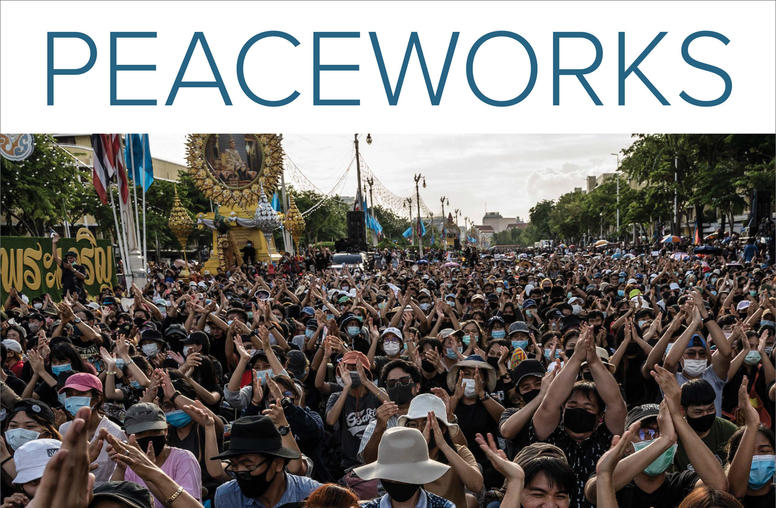
Addressing Fragility in a Global Pandemic: Elements of a Successful U.S. Strategy
This report focuses on six key themes in the legislation, drawing on the expertise of leading peacebuilding and development experts to help generate practical solutions for advancing the Global Fragility Act.
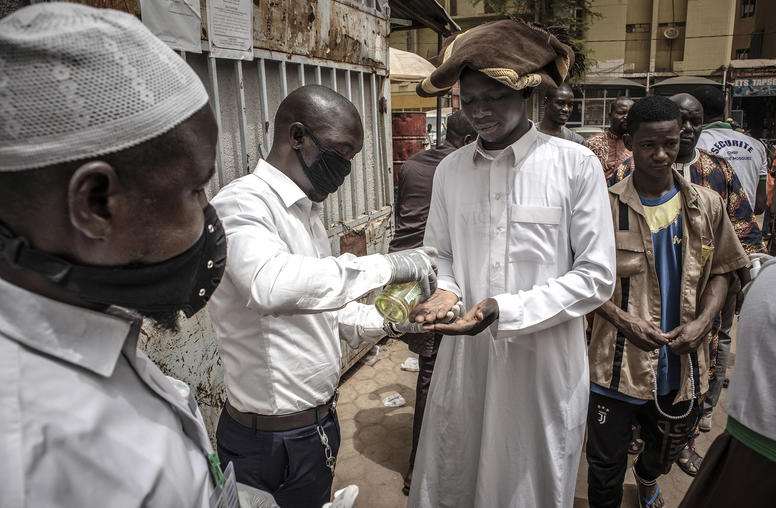
How Efforts to Address Conflict and Coronavirus Align
The recently passed Global Fragility Act provides a framework to respond to state fragility—and COVID-19.
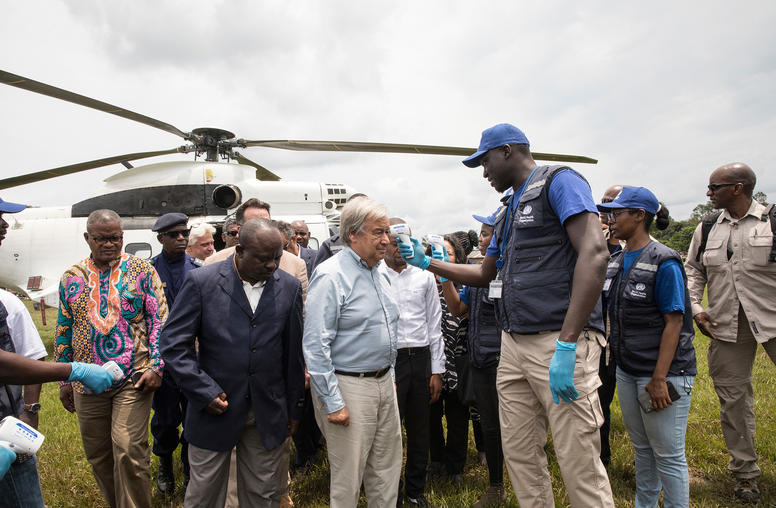
Amid COVID, We Need Enhanced International Coordination to Build Peace
Tackling the pandemic and building resilience in fragile states requires concerted international action at local, national, and global levels.
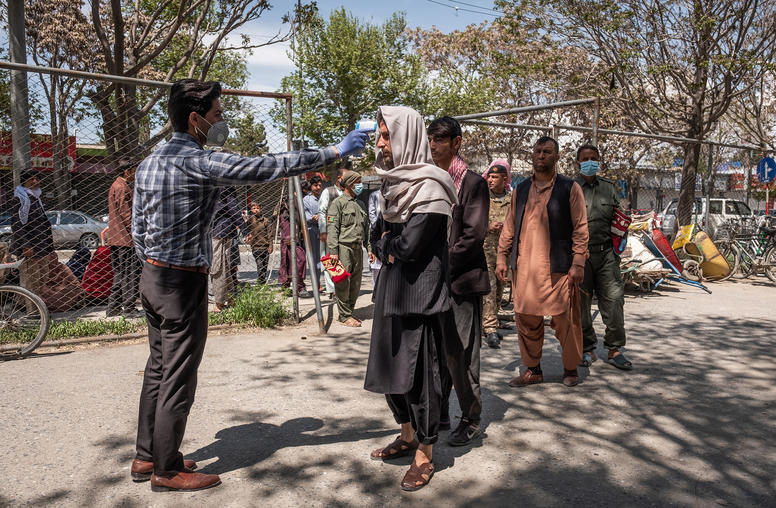
The Dangers of Coronavirus in Conflict Zones
With potentially devastating effects in fragile states, what can be done to fortify vulnerable populations?
Diplomacy, Development and Defense Officials Pledge To Advance U.S. Fragility Strategy
During a recent event convened by USIP, Deputy Secretary Biegun addressed the relevance of state fragility to US National Security, and the need for a new U.S. global fragility strategy.
Addressing a two-day workshop at USIP on GFA implementation, Acting USAID Administrator John Barsa recently spoke about USAID’s renewed focus on fragility as an obstacle to development and an integral part of the agency’s mission, particularly in the context of COVID-19.
Acting Deputy Assistant Secretary of Defense Stephanie Hammond spoke at a recent USIP event, at which leading experts shared their perspectives on GFA implementation.
